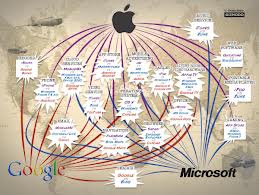It’s time to make a path to the clouds for some of your business data. Here’s how
David Linthicum | InfoWorld
Every day, cloud-based databases add more features, decrease in cost, and become better at handling prime-time business. However, enterprise IT is reluctant to move data to public clouds, citing the tried-and-true excuses of security, privacy, and compliance. Although some have valid points, their reasons often boil down to “I don’t wanna.”

Soon it will be difficult to avoid the advantages offered by databases in public clouds. Consider the benefits they bring: elastic scalability, universal network accessibility, integration with mobile platforms, pay-per-use efficiencies, avoidance of capital costs, and access to widely scattered structured and unstructured data.
How do you map a path to the cloud-based database frontier? Here are three simple steps to follow:
Understand your data. “Of course we understand our data,” you might retort. Not really — most enterprises know that data exists and where it is physically, but have no clue as to what that data means or how it’s interrelated. Just ask for a single definition of a customer, and see where that conversation goes.
You can’t build new databases or migrate data unless you understand the meaning of that information trove. Although this may seem very fundamental (and it is), it’s often where cloud database projects become derailed.
Define data security and data governance objectives. The big pushback on the use of public cloud-based databases is lack of control, often meaning the absence of security and governance. Ironically, with the cloud, you can increase your ability to control data. Public cloud-based databases can offer more sophisticated security models and mechanisms, as well as data-level governance to set policies around the use of data.
Define a path to improvement and not just a migration. Many in IT consider cloud computing to be a platform change, not a way to create more value from the data. If you’re just moving data from local to remote systems, save yourself the trouble. Moving to the cloud means changing how you store and retrieve data. At least one reason for doing so should be to make the data more valuable to both operations-oriented data owners and those who use the data to make strategic decisions.
Three steps — easy, right? Don’t get me wrong: This is hard stuff. But most worthwhile projects require effort.













Wow, fantastic blog structure! How lengthy have you been running a blog for?
you make blogging look easy. The entire glance of your website is magnificent,
as well as the content material! You can see similar here sklep online